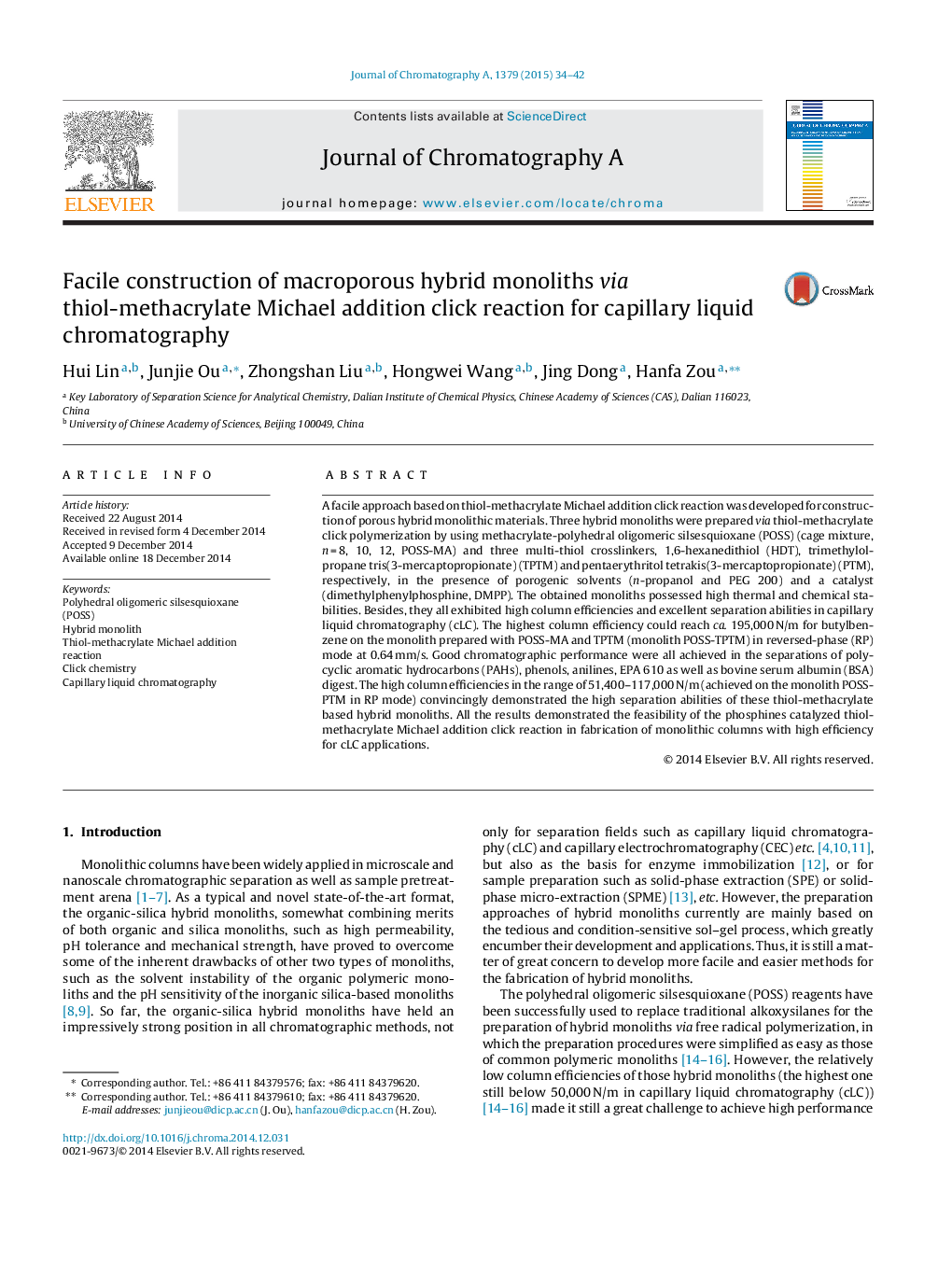| Article ID | Journal | Published Year | Pages | File Type |
|---|---|---|---|---|
| 1199626 | Journal of Chromatography A | 2015 | 9 Pages |
•Three hybrid monoliths were facilely prepared via thiol-methacrylate Michael addition click reaction.•The obtained monoliths possess high thermal and chemical stabilities.•The highest column efficiency of ca. 190,000 N/m was achieved.•The obtained monoliths exhibited high separation capabilities for various simple and complicated samples.
A facile approach based on thiol-methacrylate Michael addition click reaction was developed for construction of porous hybrid monolithic materials. Three hybrid monoliths were prepared via thiol-methacrylate click polymerization by using methacrylate-polyhedral oligomeric silsesquioxane (POSS) (cage mixture, n = 8, 10, 12, POSS-MA) and three multi-thiol crosslinkers, 1,6-hexanedithiol (HDT), trimethylolpropane tris(3-mercaptopropionate) (TPTM) and pentaerythritol tetrakis(3-mercaptopropionate) (PTM), respectively, in the presence of porogenic solvents (n-propanol and PEG 200) and a catalyst (dimethylphenylphosphine, DMPP). The obtained monoliths possessed high thermal and chemical stabilities. Besides, they all exhibited high column efficiencies and excellent separation abilities in capillary liquid chromatography (cLC). The highest column efficiency could reach ca. 195,000 N/m for butylbenzene on the monolith prepared with POSS-MA and TPTM (monolith POSS-TPTM) in reversed-phase (RP) mode at 0.64 mm/s. Good chromatographic performance were all achieved in the separations of polycyclic aromatic hydrocarbons (PAHs), phenols, anilines, EPA 610 as well as bovine serum albumin (BSA) digest. The high column efficiencies in the range of 51,400–117,000 N/m (achieved on the monolith POSS-PTM in RP mode) convincingly demonstrated the high separation abilities of these thiol-methacrylate based hybrid monoliths. All the results demonstrated the feasibility of the phosphines catalyzed thiol-methacrylate Michael addition click reaction in fabrication of monolithic columns with high efficiency for cLC applications.
